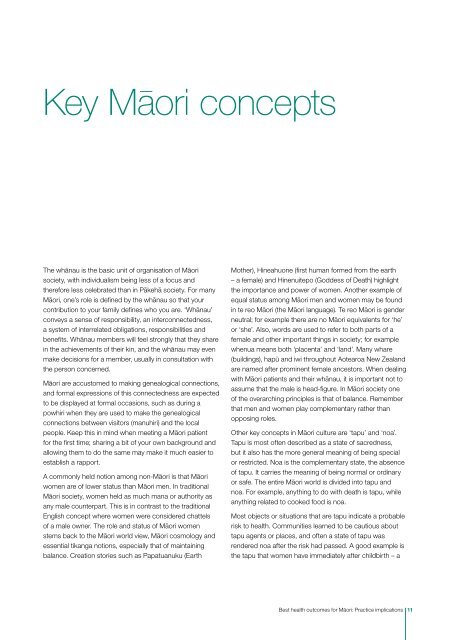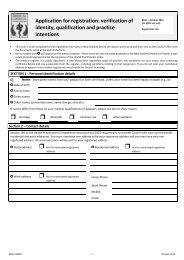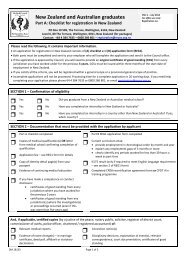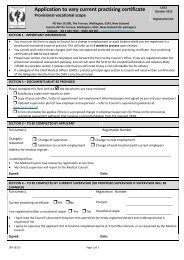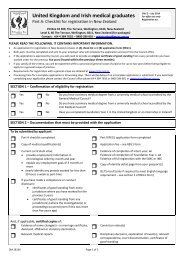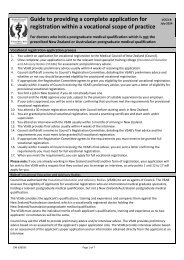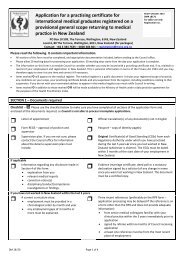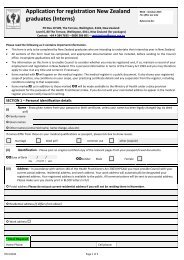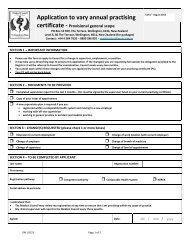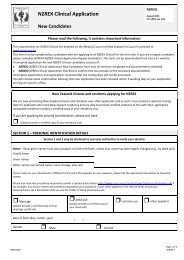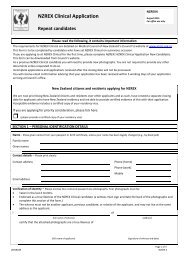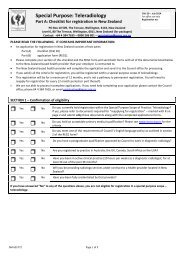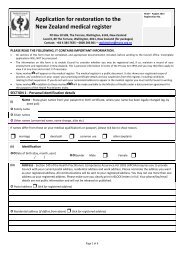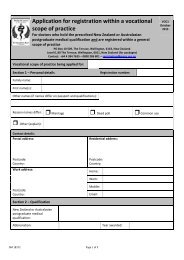Best health outcomes for Maori - Medical Council of New Zealand
Best health outcomes for Maori - Medical Council of New Zealand
Best health outcomes for Maori - Medical Council of New Zealand
You also want an ePaper? Increase the reach of your titles
YUMPU automatically turns print PDFs into web optimized ePapers that Google loves.
Key <strong>Maori</strong> concepts<br />
The whänau is the basic unit <strong>of</strong> organisation <strong>of</strong> Mäori<br />
society, with individualism being less <strong>of</strong> a focus and<br />
there<strong>for</strong>e less celebrated than in Päkehä society. For many<br />
Mäori, one’s role is defined by the whänau so that your<br />
contribution to your family defines who you are. ‘Whänau’<br />
conveys a sense <strong>of</strong> responsibility, an interconnectedness,<br />
a system <strong>of</strong> interrelated obligations, responsibilities and<br />
benefits. Whänau members will feel strongly that they share<br />
in the achievements <strong>of</strong> their kin, and the whänau may even<br />
make decisions <strong>for</strong> a member, usually in consultation with<br />
the person concerned.<br />
Mäori are accustomed to making genealogical connections,<br />
and <strong>for</strong>mal expressions <strong>of</strong> this connectedness are expected<br />
to be displayed at <strong>for</strong>mal occasions, such as during a<br />
powhiri when they are used to make the genealogical<br />
connections between visitors (manuhiri) and the local<br />
people. Keep this in mind when meeting a Mäori patient<br />
<strong>for</strong> the first time; sharing a bit <strong>of</strong> your own background and<br />
allowing them to do the same may make it much easier to<br />
establish a rapport.<br />
A commonly held notion among non-Mäori is that Mäori<br />
women are <strong>of</strong> lower status than Mäori men. In traditional<br />
Mäori society, women held as much mana or authority as<br />
any male counterpart. This is in contrast to the traditional<br />
English concept where women were considered chattels<br />
<strong>of</strong> a male owner. The role and status <strong>of</strong> Mäori women<br />
stems back to the Mäori world view, Mäori cosmology and<br />
essential tikanga notions, especially that <strong>of</strong> maintaining<br />
balance. Creation stories such as Papatuanuku (Earth<br />
Mother), Hineahuone (first human <strong>for</strong>med from the earth<br />
– a female) and Hinenuitepo (Goddess <strong>of</strong> Death) highlight<br />
the importance and power <strong>of</strong> women. Another example <strong>of</strong><br />
equal status among Mäori men and women may be found<br />
in te reo Mäori (the Mäori language). Te reo Mäori is gender<br />
neutral; <strong>for</strong> example there are no Mäori equivalents <strong>for</strong> ‘he’<br />
or ‘she’. Also, words are used to refer to both parts <strong>of</strong> a<br />
female and other important things in society; <strong>for</strong> example<br />
whenua means both ‘placenta’ and ‘land’. Many whare<br />
(buildings), hapü and iwi throughout Aotearoa <strong>New</strong> <strong>Zealand</strong><br />
are named after prominent female ancestors. When dealing<br />
with Mäori patients and their whänau, it is important not to<br />
assume that the male is head-figure. In Mäori society one<br />
<strong>of</strong> the overarching principles is that <strong>of</strong> balance. Remember<br />
that men and women play complementary rather than<br />
opposing roles.<br />
Other key concepts in Mäori culture are ‘tapu’ and ‘noa’.<br />
Tapu is most <strong>of</strong>ten described as a state <strong>of</strong> sacredness,<br />
but it also has the more general meaning <strong>of</strong> being special<br />
or restricted. Noa is the complementary state, the absence<br />
<strong>of</strong> tapu. It carries the meaning <strong>of</strong> being normal or ordinary<br />
or safe. The entire Mäori world is divided into tapu and<br />
noa. For example, anything to do with death is tapu, while<br />
anything related to cooked food is noa.<br />
Most objects or situations that are tapu indicate a probable<br />
risk to <strong>health</strong>. Communities learned to be cautious about<br />
tapu agents or places, and <strong>of</strong>ten a state <strong>of</strong> tapu was<br />
rendered noa after the risk had passed. A good example is<br />
the tapu that women have immediately after childbirth – a<br />
<strong>Best</strong> <strong>health</strong> <strong>outcomes</strong> <strong>for</strong> Mäori: Practice implications


